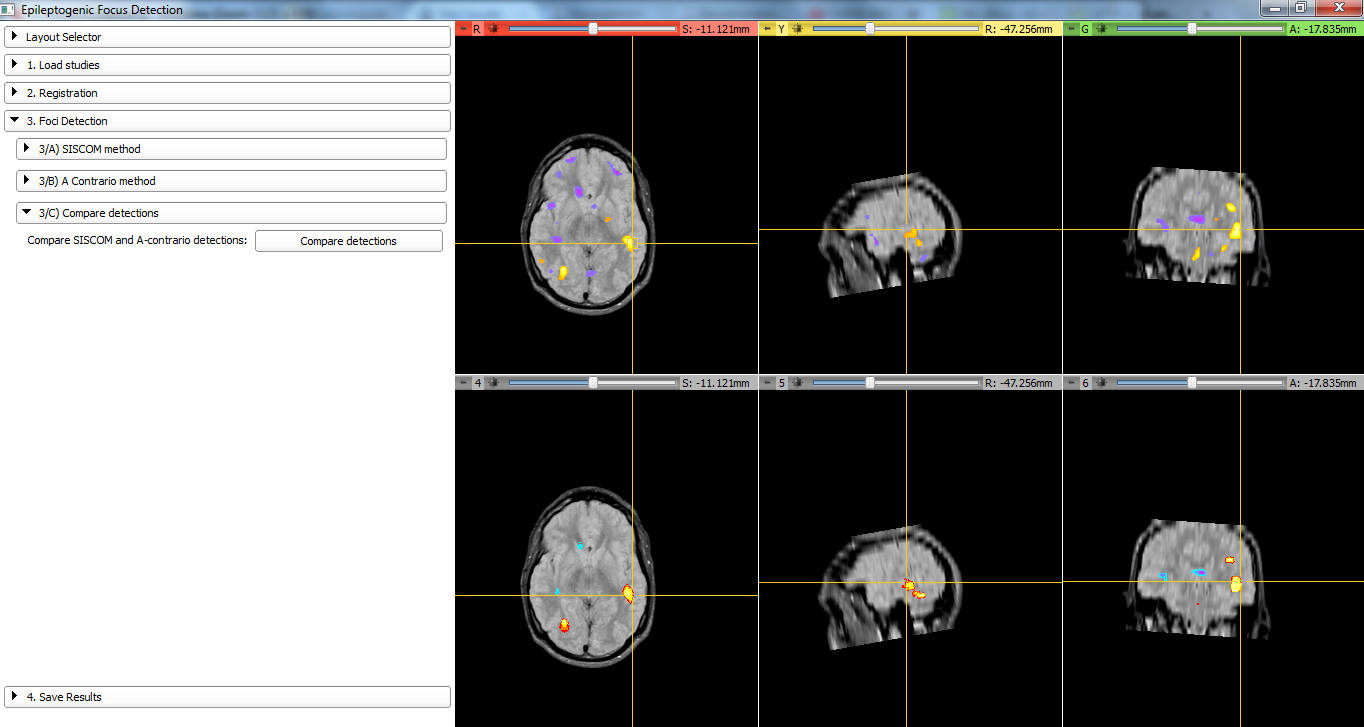Difference between revisions of "Documentation/Nightly/Modules/EpileptogenicFocusDetection"
From Slicer Wiki
| Line 32: | Line 32: | ||
Compare candidates obtained using SISCOM and a-contrario method. | Compare candidates obtained using SISCOM and a-contrario method. | ||
| − | [[File:CompareDetections.png]] | + | [[File:CompareDetections.png|Epileptogenic focus candidates]] |
| + | |||
<!-- ---------------------------- --> | <!-- ---------------------------- --> | ||
{{documentation/{{documentation/version}}/module-section|Tutorials}} | {{documentation/{{documentation/version}}/module-section|Tutorials}} | ||
| Line 51: | Line 52: | ||
** Differential method: Given two SPECT images (basal and ictal) in the same space (already registered), the images are substracted. An intensity normalization step is applied. | ** Differential method: Given two SPECT images (basal and ictal) in the same space (already registered), the images are substracted. An intensity normalization step is applied. | ||
** A-contrario: to be described | ** A-contrario: to be described | ||
| − | |||
Revision as of 18:57, 5 November 2015
Home < Documentation < Nightly < Modules < EpileptogenicFocusDetection
|
For the latest Slicer documentation, visit the read-the-docs. |
Introduction and Acknowledgements
|
This work is part of |
Module Description
This module was developed to detect epileptogenic focus candidates using SPECT images. A MRI image can also be used. Below you will find a description of the functionality of the module.
Use Cases
Compare candidates obtained using SISCOM and a-contrario method.
Tutorials
N/A
Panels and their use
- Load Studies: The following studies are required:
- SPECT basal
- SPECT ictal
- MRI (optional: for visualization of the results or SPECT/MRI registration)
- Registration: To compare the basal SPECT and the icatl SPECT the volumes must be registered. In this step it is possible to perform:
- SPECT basal/SPECT ictal registration
- SPECT/MRI registration (if MRI Available)
- SPECT basal/SPECT ictal mask (intersection) computation
- Foci detection: Differential (SISCOM) and a-contrario methods are implemented. Results can be visualized in MRI Space (if available) or SPECT Space. Results can be compared.
- Differential method: Given two SPECT images (basal and ictal) in the same space (already registered), the images are substracted. An intensity normalization step is applied.
- A-contrario: to be described
Similar Modules
N/A
References
N/A
Information for Developers
| Section under construction. |
